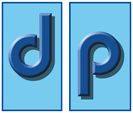The Battle between E-Books and Print
Digital reading devices first became popular around 2008. It is fair to say that this caused panic to the point of near hysteria in the publishing industry. For several years in a row the e-book sales increased by triple digits, such impressive market share growth led to many in the business predicting the demise of print books similar to that of C.D.s. However, over the last few years the market has been levelling, in fact e-book sales were down 10% in 2015 and the market has now become more predictable. It has now become clear that print isn’t going away. Evidence suggests that the most voracious readers are multiformat. More than 360 million books were sold in 2016, a 2% increase, compared with a 4% decrease of e-book sales in the same year. It is clear that printed books are still popular. This appears to be the case with the younger generation. A 2013 survey revealed that 62% of 16-24 year olds prefer printed books over e-books, the most popular reason given for this was “I like to hold the product”. Furthermore, although roughly 50% of all fiction sales are currently e-book format, only 4% of children’s book sales are digital. This may suggest that children prefer illustrations in a tangible, physical format and maybe prefer books as a way of taking a break from devices and social media.
The industry shift back toward the physical format can be partly attributed to an explosion in the popularity of adult colouring books. Presently there is no credible substitute available in e-format for such a product.
The same can be said for the growth in popularity regarding healthy cooking books. When you combine the children’s market, adult colouring and healthy cooking together this can at least partly explain why total e-book market share sales dropped from 26% in 2015 to 25% in 2016. However, over the past five years it is noticeable that e-book sales have still increased from the 18% market share it held in 2012. As in any industry, when sales increase ‘animal spirits` climb and confidence grows, publishers are likely to increase their orders and print sales are likely to continue growing. Another issue which is slowly but steadily benefitting the print industry is the ongoing technological breakthroughs regarding the impact on the environment. By evolving the use of raw materials and production techniques printing companies are increasingly looking at ways to reduce carbon emissions and the demand for greener paper is growing. Vegetable based inks are slowly becoming a viable alternative within the industry, chemical solvents are becoming reusable, offcuts and rejects are being recycled and efficient presses are reducing energy consumption and pollution. E- readers and tablets require components comprising of plastic, rubber, metal and glass. All of which have negative impacts on the environment both during manufacture and eventual disposal.
A similarity can be drawn between the resurgence of printed books and a rise in popularity of vinyl disc records in current times. There appears to be a special place in the heart of the consumer for the aesthetic pleasure that attractive, tangible and collectable products like vinyl discs and printed books give. These issues combined with the release of much anticipated and promoted current blockbusters such as ‘The Girl on the Train` sold an impressive 546,000 hard back copies and 60,000 paperback versions in just three days. Major publishers are likely to be optimistic when placing future orders for new literary releases and the shelves of book stores are likely to be filled in order to meet the anticipated consumer demand. Furthermore, the 150th. Anniversary of The Complete Alice will result in considerable demand for the printed version of Lewis Carroll’s famous fairy tale classic. As well as an attractive personal item for any fan of Alice in Wonderland it is the perfect sentimental and educational gift for any daughter, grand-daughter, niece or god-daughter at Christmas or birthday.
The combination of rising popularity among young people, the unique selling point of illustrated children’s books, healthy eating cook books, adult colouring books and the collectability of current blockbusters as well as timeless classics gives good cause for optimism within the print industry going forward. Finally, when formulating strategy for future orders publishing houses will be affected by a rising of ‘animal spirits` within the industry. This will most likely lead to large orders, increased investment in promotion and advertising and impressive market share percentage sales, overall volume sales of printed books are set to rise which is great news for the print industry.








Leave A Comment